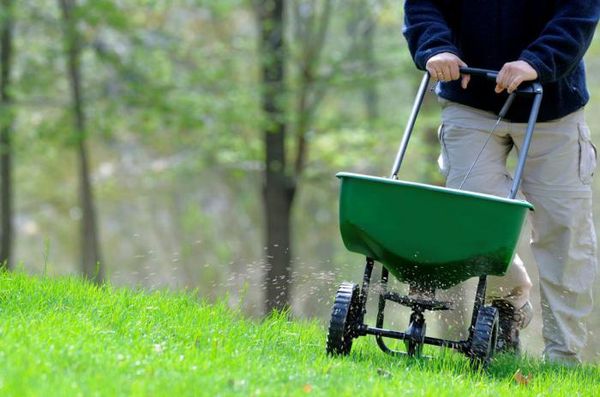Luxurious green lawn in front of the house is always pleasing to the eye. In order for it to remain bright and juicy for a long time, it is necessary to hold a series of mandatory care activities alive. One of these activities is fertilization in the fall. Thanks to the addition of a top dressing lawn will always be maintained in good condition.
Table of contents
Why do you need to fertilize the lawn in the fall
There is an erroneous opinion that it is not necessary to fertilize the lawn grass. Actually it is not correct.In order for the lawn to successfully overwinter it it is necessary to sate the fall with nutrients that the lawn needs. loses every time shearing.
In addition, fertilizers will increase immunity to diseases and strengthen the roots of plants. If in a timely manner not to make top dressing in the soil over time the grass cover will acquire a dull, lifeless appearance, the grass will become thinner and thinner. In such a state, the lawn will quickly begin to overgrow with weeds, since its resistance will be lowered.
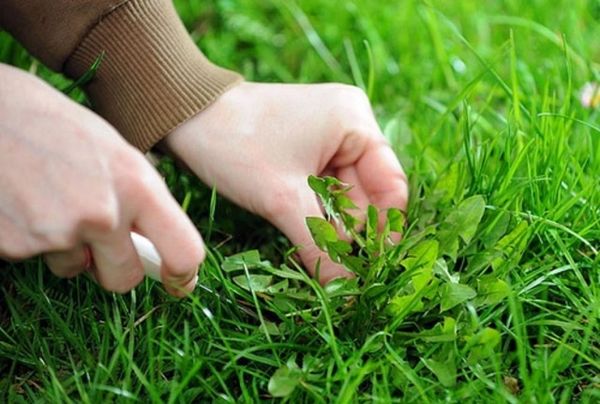
Autumn feeding is carried out from the beginning of September to the middle of October.
Fertilizers to feed in autumn
The main task of feeding in autumn is lower grass growth activity and saturation of the underground part with nutrients. These include:
- mineral fertilizers;
- organic.
TO mineral which can feed include:
- nitric;
- phosphoric;
- potassium;
- comprehensive.
TO organic relate:
- manure;
- chicken litter;
- compost.
They are brought in by the usual method or using auxiliary means - a manual seeder or spreader.
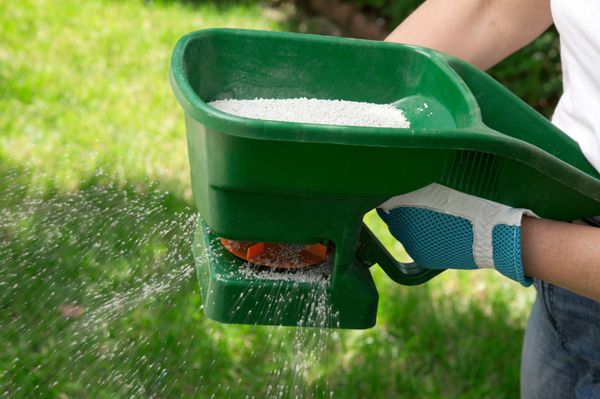
Nitrogen
Top-dressings of this type differ in saturation and reasonable prices. Fertilizer dissolves quickly, well absorbed into the soil, in the shortest time reaching the root system. This view contributes to active growth and rich color plants. If the soil is depleted, the amount must be doubled.
The most common nitrogen fertilizer is ammonium nitrate. It stimulates the growth of green mass of plants.
Its disadvantage is that an overabundance of this top dressing provokes the development of fungal diseases, as well as when applied, the acidity in the soil increases. This can be corrected by adding lime or ash to the soil.
Phosphoric
Phosphorus is necessary for strengthening the root system and the formation of new processes. The application of phosphate fertilizers helps the grass to transfer the wintering easier.
There are several types of phosphate fertilizers:
- superphosphates;
- bone flour;
- complex fertilizers.
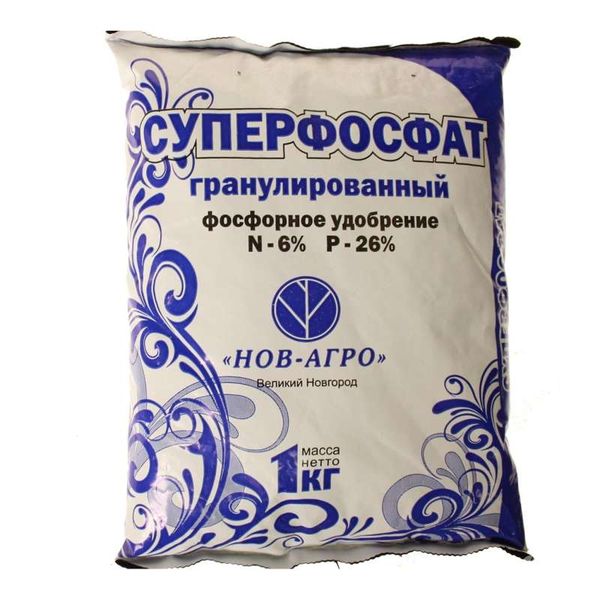
If phosphate is used with manure, then its quantity is necessary halve.
The most common are superphosphate and double superphosphate. Their excess provokes excessive growth of the root system. In this case, the soil is compacted and badly passes oxygen and moisture. If no action is taken, it will end in the death of the grass.
Potash
This type of fertilizer is produced in the form of concentrated salts. Easily soluble in water and suitable for any type of soil. It mixes well with other species for use in the complex.
Having enough potassium will provide good immunity to disease and changes in climatic conditions.
The most used feed of this type is potassium salt. Thanks to this feeding, the moisture is retained in the plant cells. They become more resilient and less susceptible to fungal diseases. The disadvantages include only the presence of chlorine in the composition, which eventually accumulates in the soil.
Comprehensive feedings
Complex preparations are a mixture of several microelements in one top dressing. There are several types of mixtures:
- potassium-nitric;
- phosphorus nitrogen;
- potassium-phosphorus-nitrogen;
- phosphorus-potash.
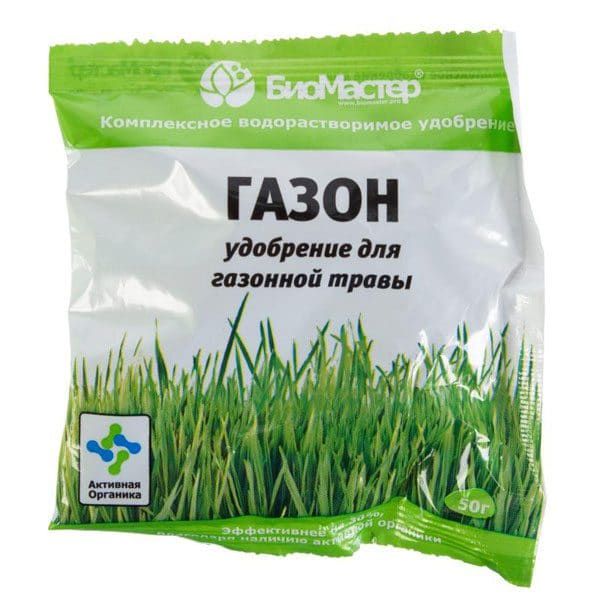
Integrated contain all the trace elements necessary for the lawn. Depending on their composition, they are used in a different period of growth.
Manure
Manure is an organic fertilizer containing a huge amount of beneficial microorganisms. It not only feeds lawn grass, but also improves the condition of the soil.
Manure should be applied in a rotten stateby distributing it over the surface. The layer of manure should be 1–2 cm thick. You can also feed with compost and rotted grass.
Chicken litter
This top dressing is fairly concentrated, and do not ferment it can not be used, because it can burn the roots of plants. Make chicken manure is necessary once in 2-3 years. Litter is diluted at a ratio of 1:15.
Urea
This type of feed is a concentrated nitrogen fertilizer, easily soluble in water. Use it to water the lawn in order to growth acceleration herbs.
With a lack of nitrogen, the plants turn yellow, become thin and weak. However, it is not recommended to abuse this fertilizer,as it accumulates in the soil and subsequently negatively affects the condition of the lawn.
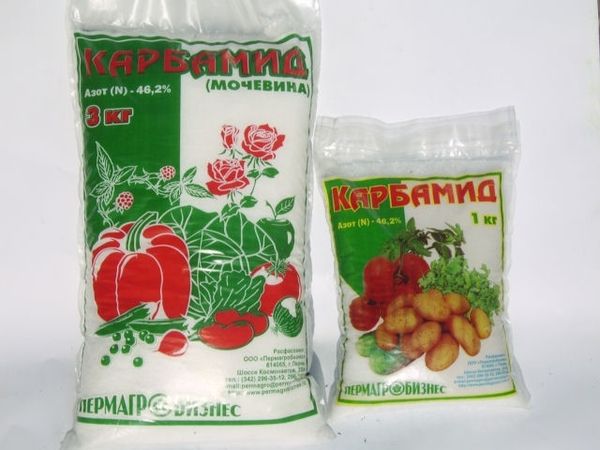
Mistakes often made when fertilizing a lawn
Very often, when feeding a lawn, gardeners make mistakes that have a detrimental effect on his condition. The most common ones are:
- Feeding not rotting manure. Non-rotting manure cannot be used, since when rotting, toxic substances harmful to plants are released. Manure can be used in the form of a solution diluted in a ratio of 1:10 and fermented for 7 days, or after rotting within 6 months.
- Nitrogen loading at the end of the summer season. In the autumn period, plants should prepare for winter, strengthen the root system, and nitrogen fertilizers introduced at the end of summer provoke active growth of green mass, which takes away extra forces and nutrients. Thus, the lawn may suffer during the winter. In the autumn it is necessary to make potash-phosphorus.
- Dry fertilize without watering. Not dissolved minerals lead to a glut of roots with minerals, in the place where there are undissolved top dressing. It threatens to damage.
For the correct implementation of feeding you should consider:
- time frame;
- correct selection of fertilizer;
- climatic conditions;
- dosage of dressings.
Given all the recommendations for lawn care is not difficult to maintain it in the proper form.
